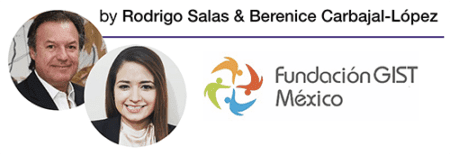As you know, GIST is a rare disease, and the outcome of the patient’s treatment depends on a correct and prompt diagnosis and treatment selection by the oncologist.
I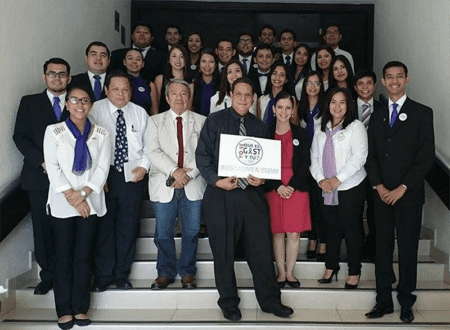 n Mexico, there are an estimated 2,000 new cases of GIST every year. At Fundación GIST Mexico we are commited to ensuring the survival and quality of life for these patients. One issue we faced in Mexico was that there were very few GIST patients diagnosed in cancer centers in our country. There are several reasons for this. An important one is that the symptoms of GIST are not specific. When a patient begins to experience them, they never go directly to an oncologist, they would go to a family doctor, or if they live in a small town or in the mountains, they would go to whomever is available, sometimes a pharmacy doctor. Since GIST is a rare disease, it is not known by most doctors who are not oncologists, so they normally give the patient treatment for gastritis or other diseases, and it is not until they are really sick that they may go to a specialist.
n Mexico, there are an estimated 2,000 new cases of GIST every year. At Fundación GIST Mexico we are commited to ensuring the survival and quality of life for these patients. One issue we faced in Mexico was that there were very few GIST patients diagnosed in cancer centers in our country. There are several reasons for this. An important one is that the symptoms of GIST are not specific. When a patient begins to experience them, they never go directly to an oncologist, they would go to a family doctor, or if they live in a small town or in the mountains, they would go to whomever is available, sometimes a pharmacy doctor. Since GIST is a rare disease, it is not known by most doctors who are not oncologists, so they normally give the patient treatment for gastritis or other diseases, and it is not until they are really sick that they may go to a specialist.
That was the main problem we found in our country. Someone once said that “you can not suspect what you don’t know, and you cannot diagnose what you do not suspect”. In light of this, we created a program named “Saving Lives through Education” to promote timely diagnosis by training the medical community about GIST. This program began in 2011 with the collaboration of Monterrey Tec, one of the finest universities in Mexico. At first, this 20-minute educational program was only aimed to contact physicians. The program was uploaded on a platform, and the idea was to make it available to doctors so they could educate themselves.
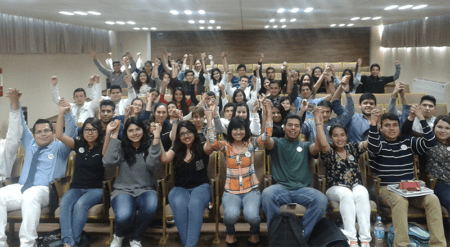 With the help of the Life Raft Group, we contacted a pharmaceutical company, and explained the aim of the program. The idea was to let them promote the project among the doctors they visited. We tried this for a couple of years without success and then we moved on to a totally different approach. We began going to the hospitals contacting the professor in charge of the educational programs for physicians in order to ask them to present our program in their “plenary sessions,” allowing us connect with a larger number of physicians and leave them no option but to learn about GIST. This method seemed to work very well, resulting every year in a higher number of physicians trained in GIST diagnosis and treatment.
With the help of the Life Raft Group, we contacted a pharmaceutical company, and explained the aim of the program. The idea was to let them promote the project among the doctors they visited. We tried this for a couple of years without success and then we moved on to a totally different approach. We began going to the hospitals contacting the professor in charge of the educational programs for physicians in order to ask them to present our program in their “plenary sessions,” allowing us connect with a larger number of physicians and leave them no option but to learn about GIST. This method seemed to work very well, resulting every year in a higher number of physicians trained in GIST diagnosis and treatment.
Then we realized a considerable number of patients lived in cities and towns far from big hospitals, and we just couldn’t go to every town or every small city to get doctors trained. We realized the perfect idea was to train medical students – those that study in the cities and who would eventually be the doctors in all these small towns. The program for students was a little bit different. We included dynamic presentations, games, and even some contests to reinforce the knowledge and raise awareness about GIST.
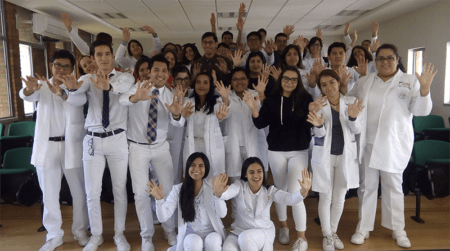 As of today, with the voluntary help of certified oncologists, we have educated more than 7,000 doctors with the following specialties: Internal Medicine, General Surgeons, General Physicians, and Gastroenterologists. We have trained more than 14,700 students in GIST diagnosis and treatment. We are now seeing more and more GIST diagnoses in our country every year. We try to update those who participate in our program with an “UpToDate GIST” which is a weekly newsletter delivered by email.
As of today, with the voluntary help of certified oncologists, we have educated more than 7,000 doctors with the following specialties: Internal Medicine, General Surgeons, General Physicians, and Gastroenterologists. We have trained more than 14,700 students in GIST diagnosis and treatment. We are now seeing more and more GIST diagnoses in our country every year. We try to update those who participate in our program with an “UpToDate GIST” which is a weekly newsletter delivered by email.
Also, thanks to this program, our number of volunteers has increased dramatically. Our volunteer program has registered around 130 GIST volunteers, most of them being medical students located throughout Mexico. They donate their time and knowledge to GIST patients, participating in educational programs for patients, GIST videos, and other activities. Since the pandemic began, we have not been able to travel to hospitals and gather doctors together to take the course. We have, however, been able to reach medical students through Zoom meetings successfully.
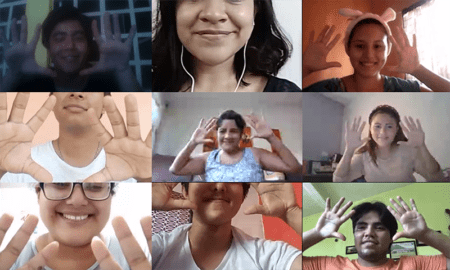 Through this journey, we have learned that not only is the clinician’s job fundamental for GIST patients’ survival, but also that the pathologist’s job is very important. The characteristics to be evaluated when examining a GIST tumor will allow the clinician to establish the risk of progression and to make therapeutic decisions, thereby increasing treatment response and ultimately saving the lives of GIST patients. This is why we have collaborated with Dr. Monica García-Buitrago, who is an expert pathologist from the Sylvester Comprehensive Cancer Center in Miami, in developing a program in Spanish to educate Latin American ‘PatholoGISTs’ entitled “Update in Histopathological Criteria for the Diagnosis of GIST”. With the help of Dr. García-Buitrago, we aim to raise awareness among pathologists and share with them how important their job is in saving GIST patients’ lives. We plan to launch this program in Latin America through AlianzaGIST, a coalition of GIST patient organizations in our region.
Through this journey, we have learned that not only is the clinician’s job fundamental for GIST patients’ survival, but also that the pathologist’s job is very important. The characteristics to be evaluated when examining a GIST tumor will allow the clinician to establish the risk of progression and to make therapeutic decisions, thereby increasing treatment response and ultimately saving the lives of GIST patients. This is why we have collaborated with Dr. Monica García-Buitrago, who is an expert pathologist from the Sylvester Comprehensive Cancer Center in Miami, in developing a program in Spanish to educate Latin American ‘PatholoGISTs’ entitled “Update in Histopathological Criteria for the Diagnosis of GIST”. With the help of Dr. García-Buitrago, we aim to raise awareness among pathologists and share with them how important their job is in saving GIST patients’ lives. We plan to launch this program in Latin America through AlianzaGIST, a coalition of GIST patient organizations in our region.

